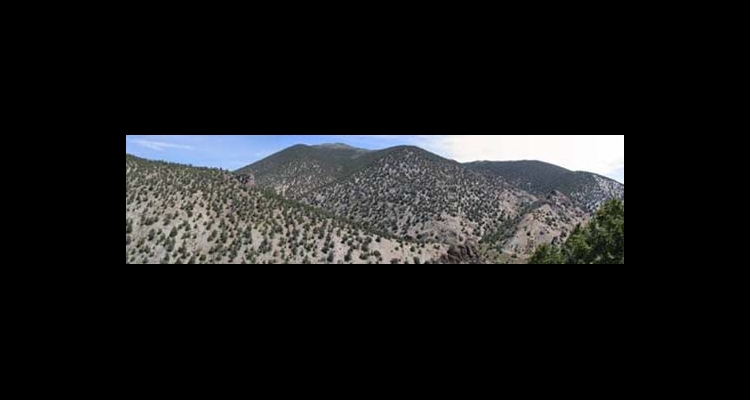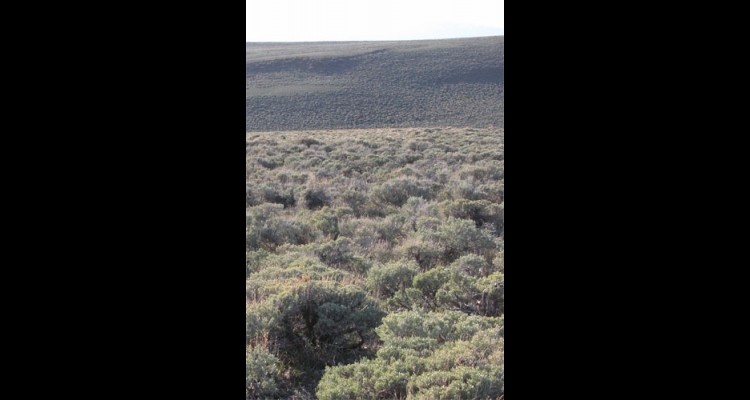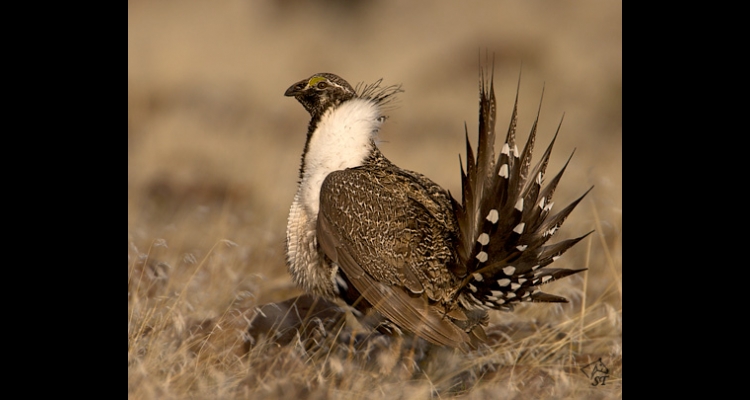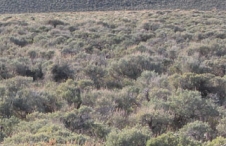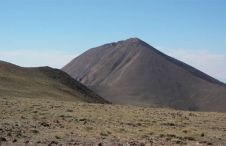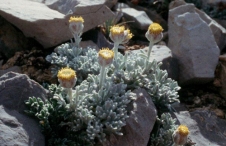Pinyon-juniper Woodlands
Pinyon-juniper woodlands comprise one of Nevada's most extensive vegetation types, occupying 14,178 square miles, or approximately thirteen percent, of the state's land area. From Nevada's main highways, these woodlands appear as tree-covered hill slopes on distant mountain ranges.
Over most of Nevada, the woodland is dominated by two tree species, singleleaf pinyon pine, Pinus monophylla, and Utah juniper, Juniperusosteosperma. Utah juniper stands alone whereas pinyon pine is absent from the northernmost ranges of Nevada, roughly those ranges lying north of the Truckee and Humboldt rivers. Western juniper (Juniperus occidentalis) overtakes Utah juniper in the northwestern part of Nevada and extends northward into the northern Great Basin and southern Cascades.
Pinyon generally dominates the woodland in the upper and intermediate elevation bands, while juniper plays a greater role in more stressful environments at lower elevations, being better adapted to drought conditions. However, juniper usually reappears on rocky ridge tops where gnarled and ancient sentinels have wedged their roots into narrow rock crevices and persisted for centuries. Both pinyon and juniper are of short stature, typically no taller than fifteen to twenty feet. Therefore, these woodlands are sometimes referred to as "pygmy forests."
In the interspaces among the trees, various sagebrush community types appear much as they would if trees were absent. However, as vegetation progresses from an open sagebrush community with scattered trees to dense woodland, herbaceous plants and shrubs that grow under larger vegetation—the understory—decrease. Dense stands of pinyon-juniper woodland contain very little understory. Typically, bleached skeletons of sagebrush remain as the only evidence of the former shrub- and grass-dominated community. Scattered remnant clumps of bunchgrasses hang on at the peripheries of the tree crowns, where the proper balance of shade, sun, and competition with tree roots for water allows them to persist in this harsh environment.
Pinyon-juniper woodland supplies valuable cover and habitat for mule deer, desert bighorn sheep, and various other species of birds, mammals, reptiles, and invertebrates. Juniper berries and pine nuts provide important food sources for a number of bird and mammal species. Old-growth woodlands offer hollow tree cavities and logs for small mammals and nesting birds. The recent wave of woodland expansion into adjacent shrub-dominated vegetation, however, may threaten species that require a sagebrush habitat, such as sage grouse and pygmy rabbit. Since approximately 1860, the area and density of trees has increased from three- to ten-fold due to fire exclusion, over-grazing, favorable climate, and recovery from settlement-era harvesting.
The value of pinyon-juniper woodland to humans continues to fluctuate and evolve with changing societal values. Although juniper species have been present in the Great Basin since at least the late Pleistocene, pinyon is a more recent addition. The migration of pinyon pine into Nevada in the middle Holocene (4000–6000 years ago) provided a stable food source that allowed native peoples to leave the shores of pluvial lakes and marshes and expand into the mountains. Nevada's native cultures have been deeply connected to the ecology of pinyon pine since that time. Early settlers depended on the woodland for fence posts, firewood, and building materials, as do many Nevada residents today. Large acreages of woodland were harvested for fuel wood and charcoal to support early mining activities (1870–1890). During this period, prior to widespread adoption of amalgamation methods for extracting gold and silver, smelters required approximately a cord of wood to process each ton of ore. Today, pinyon and juniper trees are used locally for fuel wood, and a growing market is developing for the highly palatable and nutritious pine nuts.
While to the casual eye these woodlands might appear fixed on the landscape, they have undergone dramatic flux in recent years and are likely to change as much in the future as they have in the past. As woodlands expand and grow denser in concert with the drought years that have ushered in the twenty-first century, the frequency of large, intense fires has increased. Woodland expansion conflicts with certain societal values and increases the risk of large wildfires and cheatgrass invasion. To address this, much modern rangeland restoration activity focuses on removing trees through prescribed fire and mechanical treatments such as chaining and cutting. It is possible that in the absence of management, woodland expansion may be countered by regional droughts, which have led to very extensive patches of dead trees in the southwestern U.S.
The highly dynamic pinyon-juniper woodland faces an uncertain future, given climate change and the ever-changing priorities of human society. However, anyone who has taken the time to experience the Great Basin mountain ranges will have an appreciation for this distinctive vegetation type, which provides shade and serenity in an otherwise harsh environment.
